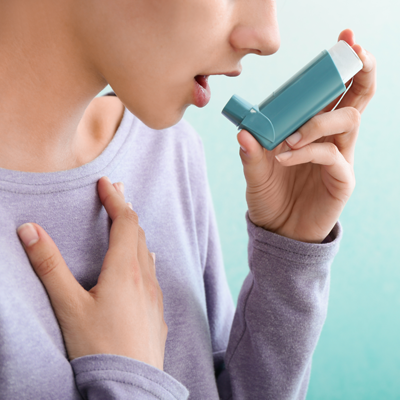List of All Services Offered By Prime Medic
List of All Services Offered By Prime Medic
List of All Services Offered By Prime Medic
List of All Services Offered By Prime Medic
List of All Services Offered By Prime Medic
List of All Services Offered By Prime Medic

Chronic Obstructive Pulmonary Disease (COPD) is a long-term lung condition that makes it hard to breathe due to limited airflow. It includes chronic bronchitis, emphysema and persistent obstructive asthma. Common symptoms are shortness of breath, cough with mucus and wheezing.

COPD is a significant health concern in Australia, affecting 1 in 20 Australians over 45. It is a major cause of hospitalisation and can significantly reduce quality of life. The primary risk factor is cigarette smoking, but exposure to air pollution, toxic fumes, and biomass smoke can also increase the risk. Genetics, including alpha-1 antitrypsin deficiency, can contribute to COPD in some individuals.
Call 000 or go to the nearest emergency department if you have:
The main cause of COPD is tobacco smoke, either first-hand or second-hand. Long-term exposure to air pollution, chemical fumes or dust can also increase risk. Genetic factors such as alpha-1 antitrypsin deficiency may also be involved.
A healthcare provider can diagnose COPD by looking at symptoms, risk factors and medical history. If needed, they may send you for lung function testing or other assessments to check your breathing capacity and overall lung health.
While there is no cure for COPD, symptoms can be effectively managed with proper care, lifestyle changes, and professional advice. This includes quitting smoking or avoiding smoke exposure, regular exercise, pulmonary rehabilitation, annual flu vaccination, and maintaining a healthy lifestyle. These measures can significantly support lung function and overall well-being.
Helpful tips:
Early signs of Chronic Obstructive Pulmonary Disease (COPD) can be frequent coughing, increased mucus production, short of breath during mild activity, wheezing or chest tightness. Because these symptoms can be mistaken for normal ageing or minor illnesses, consult a doctor if they persist.
Yes, COPD is a progressive lung disease, and symptoms can worsen if not managed properly. Lifestyle changes like quitting smoking, staying active and avoiding irritants can slow down progression. Regular check-ups with a healthcare provider are key to monitoring your lung health.
COPD is a term that includes conditions like chronic bronchitis, emphysema and persistent obstructive asthma. While asthma can improve with treatment, COPD symptoms generally persist and require ongoing management.
Common triggers for COPD flare-ups are cigarette smoke, dust, strong fumes, cold air, respiratory infections or air pollution. Identifying and avoiding your triggers can reduce flare-ups and improve daily breathing.
Yes, lifestyle changes can help. Quit smoking, maintain a healthy weight, exercise, and eat a balanced diet can support better breathing and lung health. Pulmonary rehabilitation programs are often recommended to improve quality of life.
Go to the emergency department or call 000 if you have severe shortness of breath, chest pain, blue lips or fingertips or sudden confusion. These can be signs of a COPD flare-up or another serious health condition that needs emergency treatment.
A healthcare provider may diagnose COPD by looking at your symptoms, medical history and risk factors such as smoking or occupational exposure to fumes. They may also send you for lung function tests or other assessments to check your breathing capacity.
Prime Medic offers telehealth consultations for general health support, including COPD-related concerns. We do not promote prescription medicines or specific diagnostic tools on this site. A qualified healthcare provider will guide you on any necessary tests or treatment during a consultation.